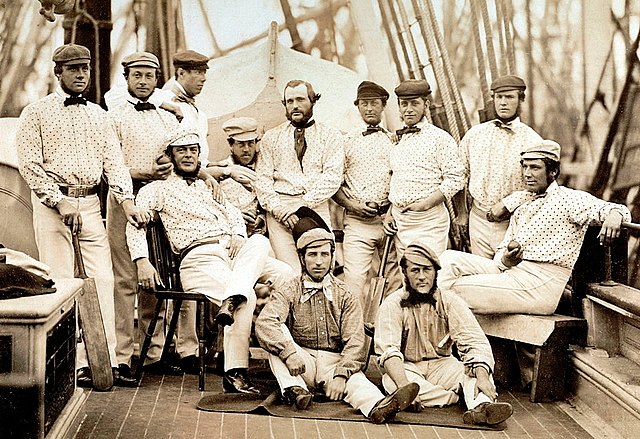English cricket team in North America in 1859
The English cricket team in North America in 1859 was the first ever overseas cricket tour by an English team. The touring team is sometimes referred to as George Parr's XI.
The first English touring team pictured on board ship at Liverpool: standing at left Robert Carpenter, William Caffyn, Tom Lockyer; middle row John Wisden, HH Stephenson, George Parr, James Grundy, Julius Caesar, Thomas Hayward, John Jackson; front row Alfred Diver, John Lillywhite.
A wood engraving of the match at Hoboken, New Jersey.
Cricket is a bat-and-ball game that is played between two teams of eleven players on a field at the centre of which is a 22-yard (20-metre) pitch with a wicket at each end, each comprising two bails balanced on three stumps. Two players from the batting team stand in front of either wicket, with one player from the fielding team bowling the ball towards the striker's wicket from the opposite end of the pitch. The striker's goal is to hit the bowled ball and then switch places with the nonstriker, with the batting team scoring one run for each exchange. Runs are also scored when the ball reaches or crosses the boundary of the field or when the ball is bowled illegally.
Shaun Pollock of South Africa bowls to Michael Hussey of Australia during the 2005 Boxing Day Test match at the Melbourne Cricket Ground
A medieval "club ball" game involving an underarm bowl towards a batter. Ball catchers are shown positioning themselves to catch a ball. Detail from the Canticles of Holy Mary, 13th century.
Evolution of the cricket bat. The original "hockey stick" (left) evolved into the straight bat from c. 1760 when pitched delivery bowling began.
Francis Cotes, The Young Cricketer, 1768






